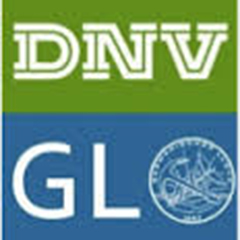- DNV GL’s FORCE report (For Reduced Cost of Energy) identifies cost of energy savings of at least 10% through the integration of four market-ready technologies.
- Cost savings of 10% equate to a conservative estimate of over €1Bn[1] in NPV terms over the next decade.
- The cost of energy produced from offshore wind is around 50% higher than its onshore cousin. Urgent collaborative and integrated action from industry players needed to unlock benefits identified.
Glasgow, Scotland, 11th June 2014: DNV GL’s project FORCE (For Reduced Cost of Energy) has identified potential savings of at least 10% of the cost of offshore wind energy, if an integrated approach to four market-ready technologies is adopted. The cost savings identified by the FORCE team could be exploited by industry right now if industry shifts to collaborative design, engineering and procurement processes. Click here to access the full report.
Project FORCE was set up to explore how the idea of “integrated design” could reduce offshore wind costs when applied to the wind turbine and its supporting structure for a typical project. 25 DNV GL expert engineers (former Garrad Hassan) from disciplines including cost modelling, offshore load calculations, blade design, controller design and structural design were brought together to work on the problem. This multi-disciplinary project has revealed the magnitude of the potential savings that a ‘joined-up’ approach to the design of large offshore wind turbines and their support structures could achieve. Through the combination of four technologies (integrated design, relaxation of frequency constraints, enhanced control systems and slender, faster blades) aggregate cost savings of over €1Bn in NPV terms could be achieved over the next decade.
However, these benefits can only be unlocked if the industry’s approach to engineering, design and procurement changes. DNV GL advocates a shift towards collaborative practices in order to address the misalignment of design-risk and cost-saving reward which is currently blocking the cost-cutting power of near-market innovation.
Executive Vice President for Renewables Advisory at DNV GL – Energy, Dr. RV Ahilan commented: “The cost savings identified by the FORCE team could be exploited by industry right now. The problem is the misalignment between the design-risk of the changes needed and the cost-reduction reward delivered by those changes. Whilst the former mostly lies with the wind turbine manufacturer, the latter benefits the complete offshore wind asset. The technology is there – we now need to smash down the commercial barriers to make it happen.”
In order to remove these barriers, DNV GL believes a rapid maturation of industry practice is needed via an integrated and collaborative approach to design, engineering and procurement. DNV GL invites expressions of interest in a potential Joint Industry Project (JIP) to accelerate such a transition.
It is DNV GL’s hope that if the collaborative approach to engineering, design and procurement championed in this report can be applied in a broader sense, there will be a change of mind-set toward building and operating offshore wind “power stations” rather than collections of individual wind turbines – offering cost reduction benefits well beyond the minimum 10% identified in the work of project FORCE.
Dr Tim Camp, Head of Turbine Engineering at DNV GL – Energy comments: “Ultimately healthy levels of collaboration are as important as healthy levels of competition. Whilst we have made significant progress on improving supply chain competition over the last few years, it is now time that we start acting like a mature industry – embracing both collaboration and integration.”
About DNV GL
Driven by its purpose of safeguarding life, property and the environment, DNV GL enables organisations to advance the safety and sustainability of their business. DNV GL provides classification and technical assurance along with software and independent expert advisory services to the maritime, oil & gas and energy industries. It also provides certification services to customers across a wide range of industries. DNV GL, whose origins go back to 1864, operates globally in more than 100 countries with its 16,000 professionals dedicated to helping their customers make the world safer, smarter and greener.
DNV GL in the Energy industry
In DNV GL we unite the strengths of DNV, KEMA, Garrad Hassan, and GL Renewables Certification. DNV GL’s 3,000 energy experts support customers around the globe in delivering a safe, reliable, efficient, and sustainable energy supply. We deliver world-renowned testing, certification and advisory services to the energy value chain including renewables and energy efficiency. Our expertise spans onshore and offshore wind power, solar, conventional generation, transmission and distribution, smart grids, and sustainable energy use, as well as energy markets and regulations. Our testing, certification and advisory services are delivered independent from each other. Learn more at www.dnvgl.com/energy.



























